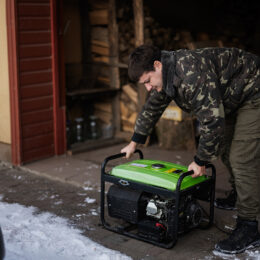 Q: We have a problem keeping several rooms comfortable. These rooms are either chilly during winter or hot during summer. What are some simple efficient methods to balance out room temperatures?
Q: We have a problem keeping several rooms comfortable. These rooms are either chilly during winter or hot during summer. What are some simple efficient methods to balance out room temperatures?
Nearly every house has some problems keeping all the rooms evenly warmed or cooled. The heating, cooling, and ventilation system (HVAC) is one of the last design features considered when a house is built. In addition to keeping the house perfectly comfortable year-round, other considerations of total installation costs and monthly utility bills are factors that must be evaluated.
There are many reasons why various rooms in a house do not stay warm or cool enough even though they have similar sized ducts. One common reason is the number and orientation of windows. South-facing windows can transmit much heat into a room, causing it to overheat during summer. North-facing windows, especially old leaky ones, can make a room chilly during winter. Both of these problems can be somewhat mitigated by installing new windows or insulating shades, but there will still be some variations.
The walls of the ducts, especially on sheet metal ducts, may be losing or gaining heat as the air makes its way from the furnace or central air conditioner to the rooms. To make this problem even worse, heating ducts are often located under windows. This positions them on cold or hot outside walls and takes space from the wall insulation thickness.
A simple method to check this is to hold a thermometer in the register outlet air flow in each room. If there is a significant difference in the temperature, wrap insulation around as much of the duct as you can reach. Where the duct runs vertically through a wall, there is not much you can do other than open the wall and install insulated ducts.
Another reason for uneven temperatures is not enough heated or cooled air is getting to those problem rooms. As a rough evaluation, hold your hand over room outlet registers to compare the air flow rates. If a room is far from the indoor blower, the duct creates more air flow resistance. This problem is exacerbated by the fact that longer ducts lose more heat through their walls. Longer ducts also have more joints that can leak heated or cooled air before it ever gets to the intended room.
Check the damper plates in the ducts near the furnace to be sure the ones leading to the problem rooms are not partially closed and blocking air flow. Try partially closing the dampers leading to the other rooms. You may have to close them quite a bit to notice the effect. This may force more heated or cooled air to the problem rooms which need it. The settings of the duct dampers to each room will likely have to be changed from summer to winter because the heat gain/loss varies with the changing seasons.
Hang a thread from a stick and hold it near all the joints in the ducts to locate air leaks. Seal these leaks with tape or duct joint sealing compound. Don’t just use cheap gray duct tape. It often comes loose in a year or two. Use either aluminum foil duct tape or black Gorilla duct tape. Gorilla tape is easier to apply and holds up for many years.
Don’t forget to make sure the room register baffles are fully opened. Installing a deflector over the register can help direct heated or cooled air out into the room. This is particularly true when air-conditioning because cool air tends to hang near the floor and not circulate throughout the room. Move furniture so it is not blocking the air flow.
Installing a duct booster fan can help get more air flow to the problem rooms. Duct booster fans are designed to fit into the ducts (round or rectangular) near the furnace blower. Some sense when the blower starts, and they come on automatically. Others have their own thermostat or can be connected to the main blower controls.
Register booster fans, which mount over the outlet register in a room, can also help. They are easier to install than a duct booster fan and provide more control over the room temperature. The register booster fan plugs into a standard wall electric outlet. It has its own thermostat so it comes on only when the main blower is running. The small fan motor uses only about 30 watts.
James Dulley is a nationally syndicated engineering consultant based in Cincinnati. If you have a question about energy use or energy-efficient products, send it to: James Dulley, Electric Consumer, 6906 Royalgreen Drive, Cincinnati, OH 45244; or visit www.dulley.com.



